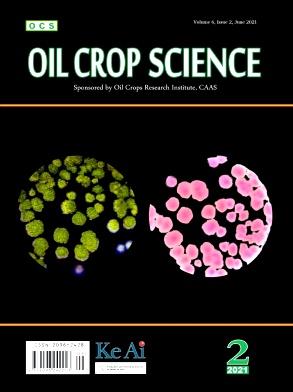A reliable, simple and cost-efficient UPLC-vwd method for simultaneously determining tocopherol and tocotrienol in peanut seeds
Q3 Agricultural and Biological Sciences
引用次数: 0
Abstract
Vitamin E is an essential micronutrient that is abundant in peanut seeds. However, the absence of a rapid and reliable method for determining its content has impeded advancements in peanut quality improvement. In this study, we developed an efficient ultra-performance liquid chromatography variable wavelength detector (UPLC-vwd) method for quantifying vitamin E content in peanut seeds, capable of detecting four tocopherols and four tocotrienols. Compared to traditional methods, this approach is simpler, more efficient, and highly accurate. By comparing two sample preparation techniques, it was found that slicing better reflects the true vitamin E content than grinding, as it minimizes losses caused by mechanical pressure. The method demonstrated robust stability and accuracy in both repeatability tests and spiked recovery tests, showing no significant differences compared to the national standard method. The study revealed that the cotyledons of peanuts are the primary storage site for vitamin E, being rich in γ- and α-tocopherols, which together account for over 90°% of the total vitamin E content. In contrast, the vitamin E content in the seed coat is considerably lower. Therefore, the optimized detection method minimizes seed coat interference during sample preparation, ensuring the accuracy of the results. In summary, the UPLC-vwd method developed in this study is a promising tool for determining vitamin E content and supports the improvement of peanut quality.
一种可靠、简单、高效的UPLC-vwd同时测定花生种子中生育酚和生育三烯醇的方法
维生素E是一种必需的微量营养素,在花生种子中含量丰富。然而,缺乏一种快速可靠的测定其含量的方法阻碍了花生品质改善的进展。本研究建立了一种高效的超高效液相色谱变波长检测器(UPLC-vwd)定量花生种子中维生素E含量的方法,可检测4种生育酚和4种生育三烯醇。与传统方法相比,该方法更简单,效率更高,精度更高。通过比较两种样品制备技术,发现切片比研磨更能反映真实的维生素E含量,因为它最大限度地减少了机械压力造成的损失。该方法在重复性试验和加标回收率试验中均表现出良好的稳定性和准确性,与国家标准方法相比无显著差异。研究表明,花生子叶是维生素E的主要储存部位,含有丰富的γ-和α-生育酚,其含量占总维生素E含量的90%以上。相比之下,种皮中的维生素E含量要低得多。因此,优化后的检测方法最大限度地减少了样品制备过程中的种皮干扰,保证了结果的准确性。综上所述,本研究建立的UPLC-vwd方法是一种很有前途的测定花生维生素E含量的工具,为提高花生品质提供了支持。
本文章由计算机程序翻译,如有差异,请以英文原文为准。
求助全文
约1分钟内获得全文
求助全文
来源期刊

Oil Crop Science
Food Science, Plant Science, Agronomy and Crop Science
CiteScore
3.40
自引率
0.00%
发文量
20
审稿时长
74 days
 求助内容:
求助内容: 应助结果提醒方式:
应助结果提醒方式:


